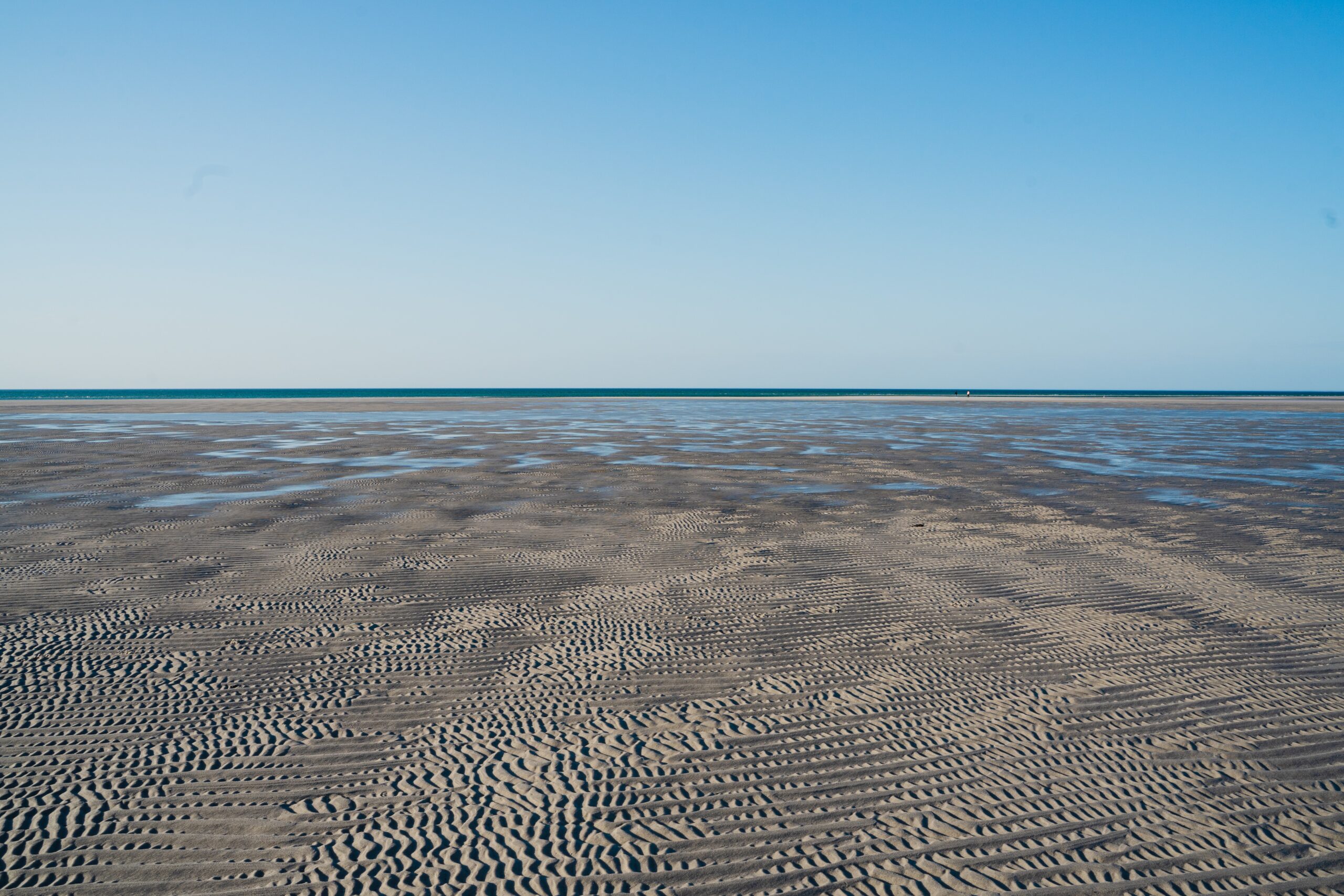A while back I went for a walk on a Cape Cod ocean beach late in the afternoon. The weather was glorious – the wind just at the right velocity. It was the time of day when the setting sun gave a depth of detail about little things that were happening along the shore. So, as the tide receded, shallow shadows grew along sand hollows where tiny pools of water swirled in bubbly patterns. Fishermen stood silent as they cast and re-cast their lines hoping for a big bluefish to grab their lures. Family members stayed connected as they shouted to each other over the sound of the surf. A small group of seals intermittently appeared and disappeared in the waves. I didn’t see any sharks looking for dinner.
To get to this particular beach I had to descend a steep dune that was damp and rusty red in color, and where my feet sank a few squishy inches with each downward step. This sheer slope is an introduction to what is happening to the sand banks that line this shore.
I have been on these sea beaches many times over the decades and they never fail to impress me. When I look straight ahead, I am staring across the Atlantic to a horizon on which there is one or more ships moving snail-like north or south. Beyond them – about 3000 miles away – is Ireland. When I look to my left or right, I see miles of high sandy-earth cliffs with shades of copper, yellow ochre, black, and beige that show the sand’s differing and intriguing mineral and organic composition. On the top of these heights there is a very thin layer of green growth, which, at various points, hangs suspended in the air with nothing underneath to support it.
Dotted along the cliff-tops there are houses that sit close to the edge, and appear to be waiting for the day when they will slide down to the beach, or be demolished before that happens. Blatant evidence of previous home collapses is scattered along the cliff walls – concrete blocks, wooden railings, and large round metal objects (maybe water heater pieces). In past years, hurricane wind and water have gouged portions of the dunes taking out huge sections of paved parking lots and wooden stairways.
On this particular late afternoon, everything was quiet – no big wind or rain, and no home was going to crash down while I was standing there. But if I concentrated closely on the dune surface there were tell-tale signs of disintegration. As I looked intently, I could see minute slivers of activity. Miniscule cascades of sand grains formed delicate downward trickles – a few here and a few there. They would stop in one place and start somewhere else. They were intermittent, but ongoing, and a preamble to the future.
These dunes are aging away, sometimes with hardly visible sand streams and sometimes in aggressive attacks from violent storms. These dunes are extraordinarily beautiful and mysterious. They take my breath away. They stand impassively facing an ocean that will ultimately destroy them. They don’t know what nature will do to them, but the owners of the houses that sit on top do know. As the dunes wait, so do the people who possess, at least for this moment, modest pieces of this magnificent, crumbling land. They understand that sometime – maybe tomorrow or in a few years – they will be forced to forfeit the experience of waking each morning to see the sun burst up over the ocean, or having a glass of wine as dusk floats in from behind. I am not one of those ocean-side home owners, but I can imagine that they are now and will always be grateful for the days and minutes they have had in this precious environment.
Some say that the sand flowing from the ocean-side moves around the end of Cape Cod to fill in bay-side inlets. This is only partly true. Some bay beaches are getting bigger, but some are getting smaller, similar to what is happening on the ocean. Geographers predict that in a few thousand years Cape Cod will no longer exist – ultimately worn away, not recognizable as a distinct piece of land – just infinite numbers of itinerant sand particles not connected to any particular place.
A few thousand years is a long time away. I can’t count how many generations that may represent. A piece of my soul has been on the Cape for more than fifty years, just a pinpoint compared to several thousand years. I expect that I will be a part of the Cape aura for another span of time. If my kids and grandkids want to stick around here that may add up to another sixty years. My house is not going to be swallowed up any time soon. So I can relax. In the meantime, I focus on today – the incredible blue quality of the light, the daily rumble of surf, and the first-hand opportunity to see the Cape aging into oblivion – very, very slowly.


Leave A Comment